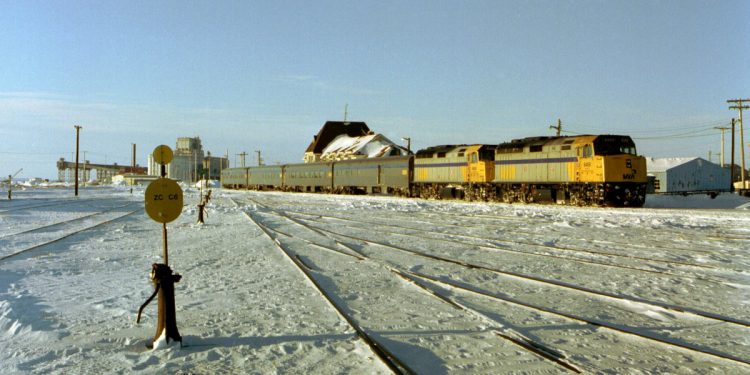The issue of ports is not an either/or choice. Having two ports would be an advantage for the province and the country.
Nor is the railroad transportation competition for Arctic Gateway. Rather it is an asset to the Churchill line. NeeStaNan provides an opportunity that Arctic Gateway will never be able to realize on its own. Why?
NeeStaNan will need to buy railroad time from the Arctic Gateway Group for transport of its goods from Hudson Bay, Saskatchewan to Amery. Currently, trains run sporadically on the Arctic Gateway railway.
While there is one test load of 20,000 tonnes of zinc oar concentrate heading north on the Churchill line this spring or summer from Hudson Bay to the port, there is no guarantee that this will be followed by other loads. And even if it is, it will take, according to transportation expert Barry Prentice, about 2 million tonnes of product to make the line sustainable. Can you haul that much and store it for shipping in a short season?
NeeStaNan in Manitoba will be a spur line
To feed the port in its early stages, a spur line will be built off the Arctic Gateway line from Amery to the new seaport. If the new port is as successful as NeeStaNan has every reason to believe it will be, given talks with international shippers, the Arctic Gateway line stands to make a lot of money as the main line from the Pas to the NeeStaNan spur.
Saskatchewan and Alberta have already signed a letter of understanding with Manitoba agreeing on support among the three prairie provinces. Casual discussion with legislators in North Dakota has generated immediate interest.
This is a game changer
All of this portends a rebalancing of wealth and power in Canada. Remember, the corridor is owned by the First Nations who will have a huge stake in the future of the north. Instead of depending in the Pacific west and Canada east, we on the prairie provinces will be able to dictate our own terms of trade with the rest of the world. The line and the port open up this isolated country to opportunity for local people, but everyone will benefit, including, after a bit of adjustment, all other parts of Canada. For example, people in the Ring of Fire in northeastern Ontario see Port Nelson as an excellent shorter haul destination for their export minerals.
No longer landlocked, we on the prairies do not need to rely on permission to cross competing provincial boundaries to move our oil and gas or to sell our grain for that matter. Grain companies that currently are quite happy with their longstanding arrangements with the traditional ports will have to balance those relationships against giving the northwest United States a competitive advantage if they turn to NeeStaNan.
Nor is it only agricultural or natural resources that we can export. A working northern port would provide Manitoba and prairie manufacturers with cheaper and faster egress for their products. This would also boost the fortunes of CentrePort, increasing its traffic and relevance.
The talk of hydrogen production can become a reality at salt water with nearby access to electric energy undiluted by hundreds of miles of transport – and it can be readily shipped. Oil and gas can be processed into LNG here for distribution to the world, thanks to local temperatures and a nearby energy supply.
And those folks in Churchill and the owners of the Arctic Gateway Railway will no longer have to rely on government handouts to do the bare minimum to reinforce their line or improve their specialized port.
Time for that Economic Horse to spring into action
This revolutionary concept is a game changer for all of Canada but especially for Manitoba. It is time to take our autonomy back from other jurisdictions and forge ahead with pride and courage. It opens up amazing economic opportunities for all northern First Nations and gives the folks up there a stake in a prosperous future.
We can do this Manitoba.



